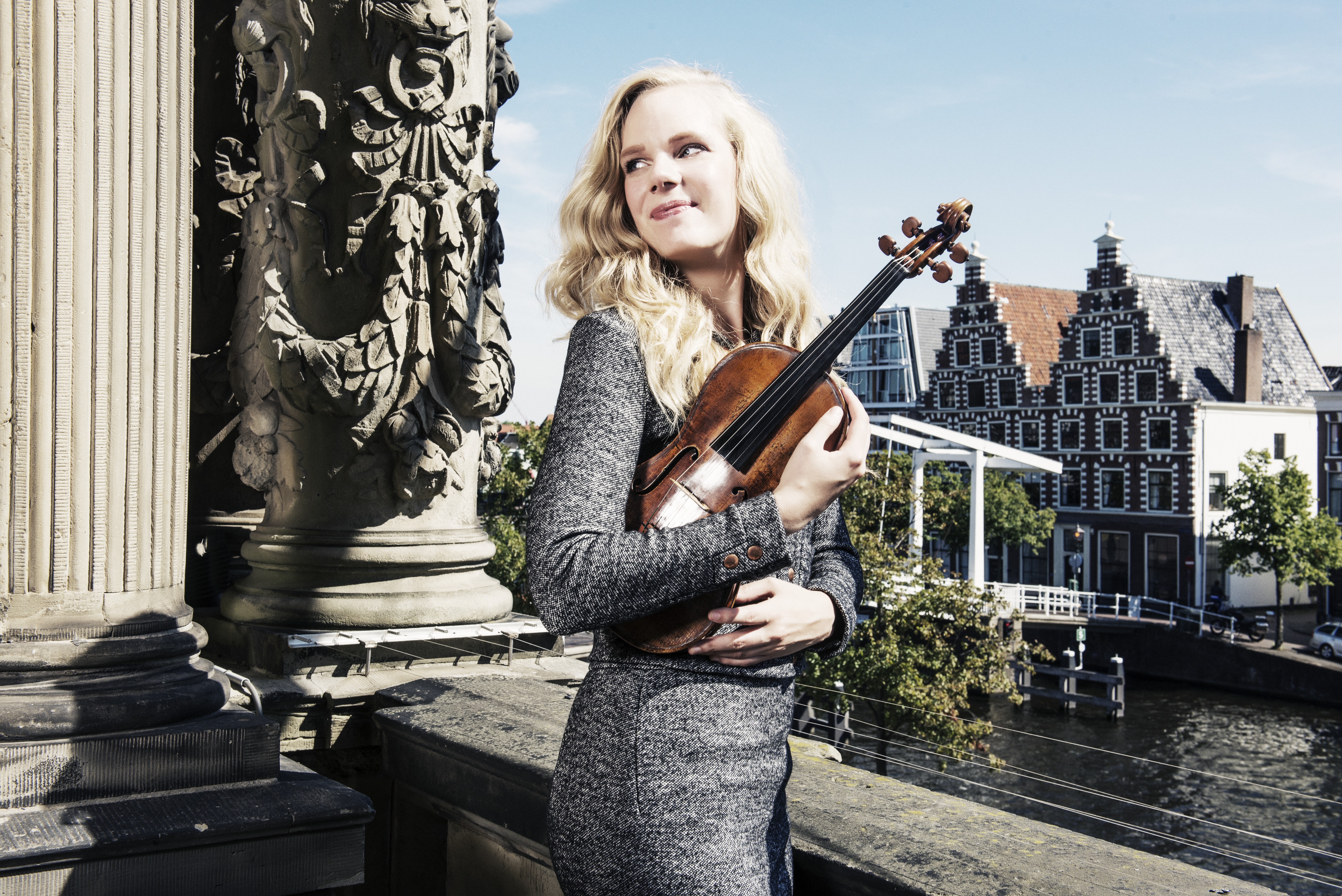Enjoy Sinfónica de Tenerife’s 'Bartok and the violin' this week

Bartok and the violin is the title of Sinfónica de Tenerife’s next concert to be held on Friday the 6th at 7:30 pm in the Auditorio de Tenerife. It features British conductor Alexander Shelley -in his first time on the island- and Dutch violinist Simone Lamsma as guest soloist.
On its fifth season concert, the Sinfónica de Tenerife will deal with love and indifference, or the world of dreams by means of pirates and sacred woods, with sound strokes that range from colourist musical impressionism to Neoclassicism. The programme includes Suite nº 1 and 2, for small orchestra by Igor Stravinsky; Violin concerto nº 1, op. posth., BB 48a/Sz36 by Béla Bartok, and Daphnis et Chloe: Suites nº 1 and 2 by Maurice Ravel.
Alexander Shelley studied cello and conducting in Germany and attracted the attention of the general public when he was unanimously awarded the first prize at the Leeds Conductors Competition in 2015. That year he took over Pinchas Zukerman as musical director of the National Arts Centre Orchestra in Canada and became first assistant conductor at the Royal Philharmonic Orchestra, with which he conducted a series of concerts at Cadogan Hall and toured national and internationally.
The guest soloist is Dutch violinist Simone Lamsma, one of the most impressive and captivating musical personalities at present, according to the critics. Lamsma started to study violin when she was 5 years old and later travelled to the United Kingdom to train at the Yehudi Menuhin School and at the Royal Academy of Music in London, of which she is associate since 2019, as designated by the Honorary Awards Committee.
In her performances, Simone plays a 1718 “Mlynarski” Stradivarius thanks to the generous loan of an anonymous benefactor. In the last seasons she has given more than 60 violin concertos, playing with the best orchestras in the world. Her recent performances include her debut with the New York Philharmonic, Orchestre Symphonique de Montréal, Pittsburgh Symphony Orchestra, Sydney Symphony Orchestra, Detroit Symphony Orchestra, Wiener Symphoniker, Gürzenich Orchester, Cleveland Orchestra, Cincinnati Symphony Orchestra, Royal Concertgebouw Orchestra, City of Birmingham Symphony Orchestra or Houston Symphony.
Stravinsky, Bartok and Ravel, the three authors the Sinfónica de Tenerife revisits in this concert, lived in one of the most artistically fruitful periods in western civilization, although they were greatly affected by the political situation in their respective countries and the great world wars. In the midst of this social and geopolitical unrest, the avant-garde drive of the three composers led them to introduce revolutionary compositional innovations in the musical language of the time, thus answering the many aesthetic issues that had been raised in the previous century.
Igor Stravinsky’s Suite nº 1 and 2, for small orchestra will open this Sinfónica de Tenerife event. A composition written while in exile in Switzerland and France that starts with a cryptic introduction “Andante”, of an acid and dissonant lyricism, that gives way to three national dances. In the ingenious Suite nº 2, of a more robust timbre, the author proposes a chromatic “March” with the winds leading the melody; the famous, histrionic “Waltz” without strings, with the flute and the piccolo in the lead; a densely textured circus “Polka” that plays with the contrasting dialogue between brasses and woods to conclude in a final, dizzy “Galop”.
Together with Zoltan Kodaly, Béla Bartok is regarded as one of the pioneers in scientific ethnomusicology research on Eastern Europe folklore. In 1908 they both embarked on a journey across rural Hungary and Romania in order to gather, among others, Magyar songs, whose influence was to remain forever in their compositions. Although he wrote the Violin concerto nº 1, op. posth., BB 48a/Sz36 in the same year, it remained unknown until after his death in 1945. Bartok dedicated this composition to the young violinist Stefi Geyer with whom he was in love. The composer’s bliss is perfectly portrayed in the Andante sostenuto.
The programme ends with Daphnis et Chloe: Suites nº 1 and 2 by Maurice Ravel, a choreographic symphony that aims at portraying the author’s neoclassical view of Antiquity. The score follows a very strict tonal plan by means of a small number of motifs whose development guarantee symphonic homogeneity in a work that is based on the pastoral novel by the Greek poet Longus, Daphnis and Chloe. It starts with an ethereal “Nocturn”, which gets its disturbing atmosphere from the string tremolos and the use of wind machines. It is followed by the “Interlude”, with evocative harmonies, and concludes with the frenzied “War Dance” by Bryaxis’s pirates, who kidnapped Chloe.
The second suite opens with one of the best-known passages of the score, the bright “Dawn” on a fainted Daphnis outside the cave of the nymphs. The water that runs among the rocks flows in flutes, clarinets and harps; the sun rises in the orchestra’s deepest instruments; the violin and the piccolo imitate the birds singing at dawn over a winding accompaniment that flows into a great central orchestral climax focused on the musical theme of love. In the “Pantomime”, the lovers evoke in their dance -helped by wind and wood instruments plus a relevant solo flute- the love of Syrinx and Pan, the god who saved Chloe. Finally, the frantic, orgiastic “General Dance” is a bacchanalian with an unbridled 5/4 time and exuberant orchestration.
Tickets for this subscription concert can be purchased at the box office from 10:00 am to 7:30 pm Monday to Saturday; by phone on 902 317 327; or via the internet on www.sinfonicadetenerife.es and www.auditoriodetenerife.com.


